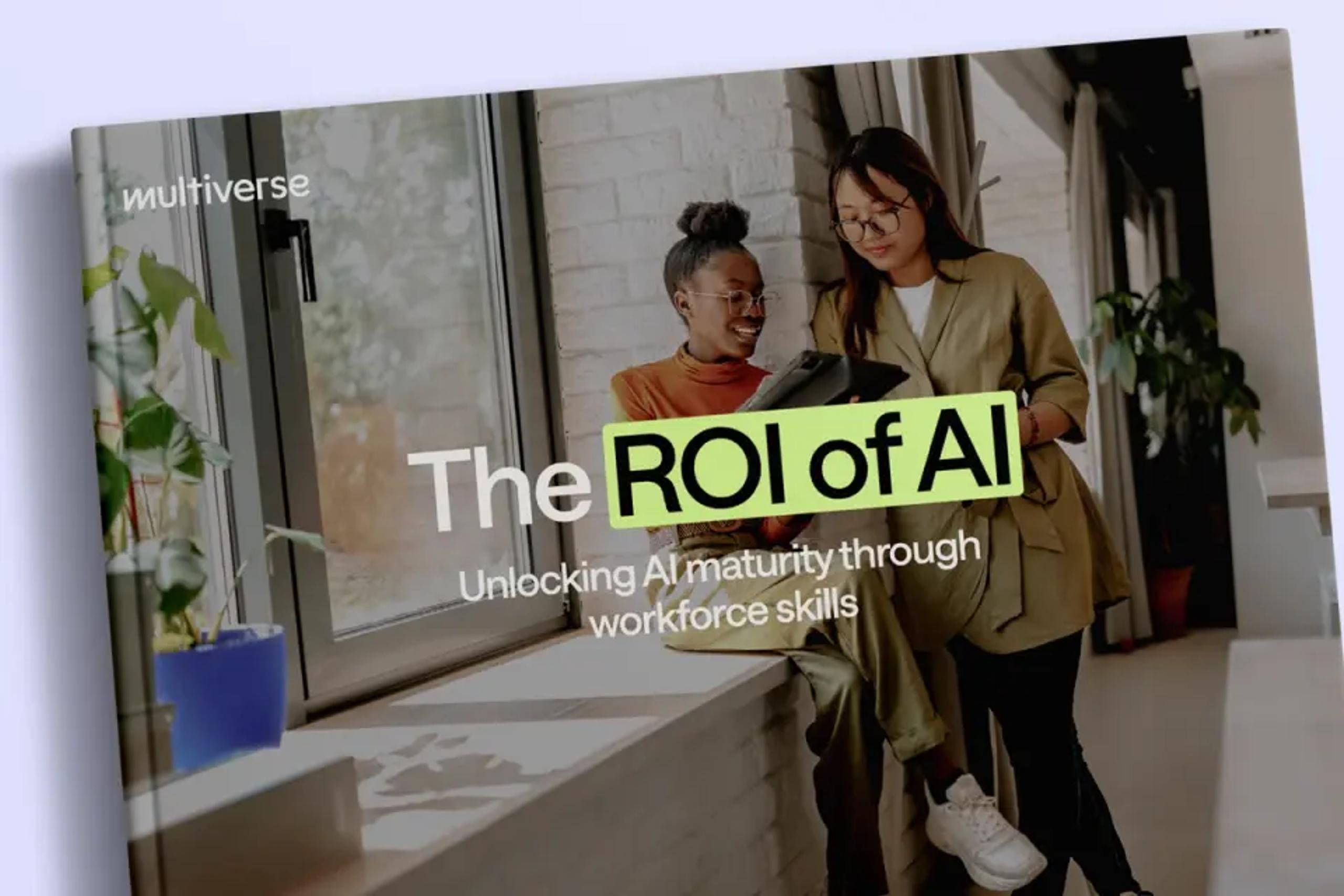An introduction to our latest research by Matt Sigelman, President at Burning Glass Institute, and Euan Blair, CEO at Multiverse.
The US is in the midst of a paradoxical labour market challenge.
On the one hand, millions of workers are stuck in occupations that don’t offer pathways to economic advancement. On the other, businesses still struggle to find skilled workers and better-utilise the talent already within their ranks.
To an outside observer, this might seem like a straightforward challenge. Why can’t the businesses in search of talent just find and train the workers looking for higher-wage roles? But while it may be an easy problem to identify, mapping – and implementing – the solution is much more complicated.
The first step in solving this massive labour market dilemma is to understand the scope of the challenge. That’s why Multiverse and the Burning Glass Institute embarked on an ambitious new research project to understand the barriers facing workers in America — as well as the occupations that could provide them better opportunities for advancement.
What we learned is that nearly 128 million workers across the country – a sizable majority of the labour force – face challenges on their path to upward mobility. That includes the 68 million mid-career workers who are seeking a chance for better pay; 36 million people across the country who work in high-churn, low-wage jobs; 10.6 million career starters who are not college graduates; and nearly 13 million underemployed college graduates. The majority of these skilled workers face barriers to new opportunities because they are skilled through alternative routes, and do not hold a college degree – they’ve hit the “paper ceiling.” And many of their current jobs are disproportionately at risk of disruption or automation from AI and other technologies. Retail and hospitality workers, receptionists, cashiers, and drivers all rank among the top occupations likely to be automated — and are among the roles these workers are most likely to have.
Against a backdrop of accelerating technological change that continues to alter the way we work, it’s clear that tens of millions of Americans will need new skills in the coming decades. This is both highly predictable, and highly solvable.
A growing body of research suggests that apprenticeships, which combine demand-aligned, real-world training with paid employment opportunities, can both help businesses build new talent pipelines and provide workers with a new route to higher-skill, higher-wage careers. While apprenticeships are still a very small part of the US education ecosystem, and often focused on skilled trades, they hold the potential to be an important piece of the reskilling puzzle — particularly for workers who are underemployed, stuck in jobs with little opportunity for career mobility, or who need new skills to advance in their chosen field.
That’s why in addition to quantifying the population of workers who are blocked from upward mobility, our research focused on mapping the apprenticeship-ready occupations that could help these workers advance.
These occupations offer good wages, are increasingly in demand, and are accessible to individuals who don’t have a bachelor’s degree. After assessing nearly a thousand occupations, we identified 149 that meet the criteria of apprenticeship-ready. Twenty of these already utilise apprenticeships, and within those 20 occupations, apprenticeship opportunities have nearly tripled in the past five years.
Our research mapped 2,700 pathways for workers, beginning with a “source” job (one where workers could benefit from enhanced upward mobility) and ending with one of the 149 apprenticeship-ready target occupations.
The US has incredible potential for growth of apprenticeships. Our modelling suggests that as the apprenticeship market matures (eventually making up 4.5% of job openings in apprenticeable occupations), the country could see 830,000 new apprenticeship opportunities each year. And because these apprenticeable occupations pay more than the low-wage, high-churn jobs workers previously held, Americans who enter apprenticeship programs could earn $28.5 billion more in wages each year.
In many ways, this isn’t a new idea. For decades, US policymakers have sought ways to help workers displaced by the shifting economic landscape prepare for the future of work. But our hope is that this research can inspire new action from businesses and policymakers alike.
While some previous efforts to reskill at scale have fallen short (like the promise of helping coal miners become coders), the research identifies achievable career progressions – including the 2,700 potential pathways for workers – with the aim of helping both workers and employers understand how to translate existing skills into higher-wage roles. By identifying specific pathways from high-churn, low-wage jobs into apprenticeable occupations, we’re hoping these findings will make it easier to identify the myriad opportunities that could be made available to millions of workers across the country.
Of course, while this work may be a necessary first step, there’s more to be done. We look forward to continuing our collaboration with businesses and policymakers across the country to translate these ideas into action — and build a labour market that works better for employers and workers alike.







